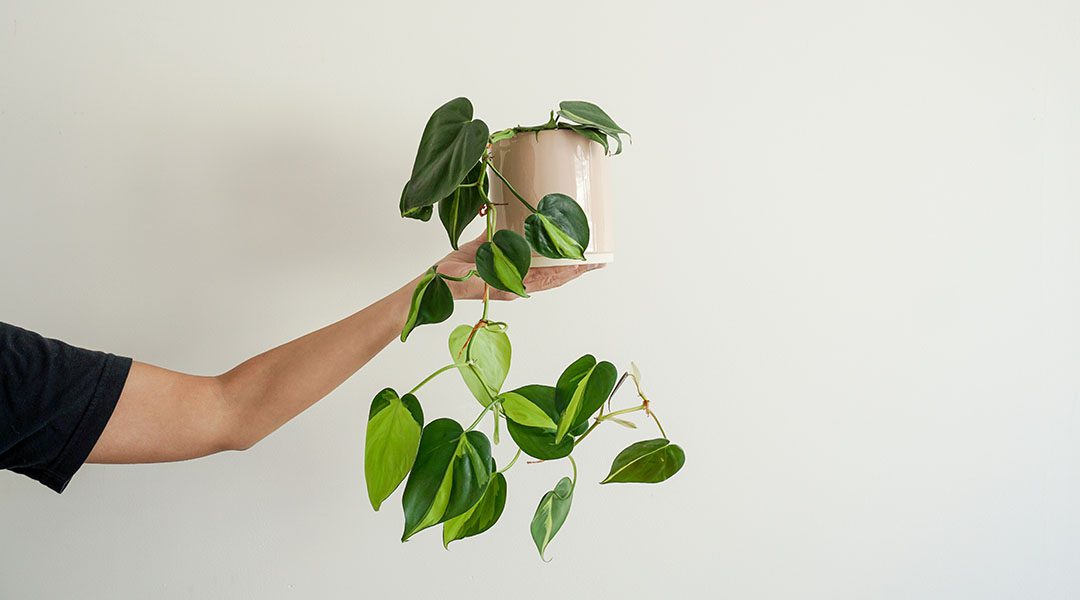Vining houseplants are all the rage these days. From philodendrons to pothos to hoyas, we love them all, but those vines can get out of hand! If you’re looking for a way to train your vining houseplants to climb or trail, look no further – this post has you covered. We’ll discuss how to train philodendrons, and provide you with a step-by-step guide to help you get started. Whether you’re a novice or an expert, this guide is sure to help you take control of those vines when they become unruly.
Philodendrons The King Of Vining Houseplants
There’s no doubt that philodendron plants are one of the most popular houseplants on the market. Not only are they beautiful, but they also have a lot of benefits to offer. We’ll be discussing everything you need to know about philodendrons and choosing the right type for your home. We’ll also go over how to care for and train them so that they will thrive in your home for years to come.
First, it’s important to identify the right type of vining houseplant for your home. There are two main types of philodendrons: upright and vining. Each has its own unique features that will make it perfect for a specific type of environment. Once you’ve identified the type of philodendron that is best for you, learn how to care for and train them properly so that they will thrive in your home.
One of the biggest benefits of having a vining houseplant in your home is their ability to add beauty and texture wherever they’re placed. They’re also great at bringing oxygen levels up in spaces where there is high humidity or low air circulation – like near a fireplace or near an air conditioner during summertime. In addition, these plants are great at reducing stress levels – especially if you have pets or kids in your home who tend not to get along well with other plants or animals (or humans).
Being aware of proper watering schedules is also important when caring for philodendrons. Make sure to water them deeply when the soil is completely dry by feeling the soil or uding the ‘pencil test’. For optimal growth, give them regular doses of fertilizer every month during the growing season (spring through fall). The amount of fertilizer used will depend on the size and type of plant you have – making sure not exceed their recommended dosage! And finally, be sure to position them so that they receive light throughout the day – Philodendrons do better with some indirect sunlight during peak hours (10am-3pm). If you follow these guidelines, you’ll be able to enjoy one beautiful vining houseplant in no time!
Training Techniques To Get Your Philodendron To Grow Quickly
If you’re looking to get your philodendron plant growing quickly, then you’ll want to follow some basic training techniques. Philodendrons are tropical vines that can grow up to six feet in height, so it’s important to choose the right variety and provide the right environment for growth. By understanding the importance of soil nutrients and taking care of your philodendron’s environment, you’ll be able to help this plant reach its full potential.
Once you’ve chosen your philodendron variety and selected your pot size, it’s important to create a balanced environment for growth by using an all-purpose soil. Make sure that there is enough moisture available throughout the year by watering regularly using a smart watering schedule – don’t over-water or allow water stagnation.
Training is essential for healthy vining growth – so be sure to surround your philodendron with flexible material (like chicken wire) or use frames or moss poles when training them up high if desired. It’s also important to take measures against pests and diseases while growing your philodendron indoors by installing grow lights and keeping an eye out for potential problems early on. And finally, continue training and pruning your plant regularly will not only improve its appearance but encourage new growth as well!
Vining houseplants are an easy and beautiful way to add color, texture, and life to any home. With the right training techniques and care, you can easily train different types of vining houseplants such as philodendrons, pothos, and hoyas to climb or trail in your home. Start by researching the right type of vining houseplant for your home and following the steps outlined. With a bit of practice and patience, you’ll be enjoying a lush indoor garden full of vibrant vines in no time!



